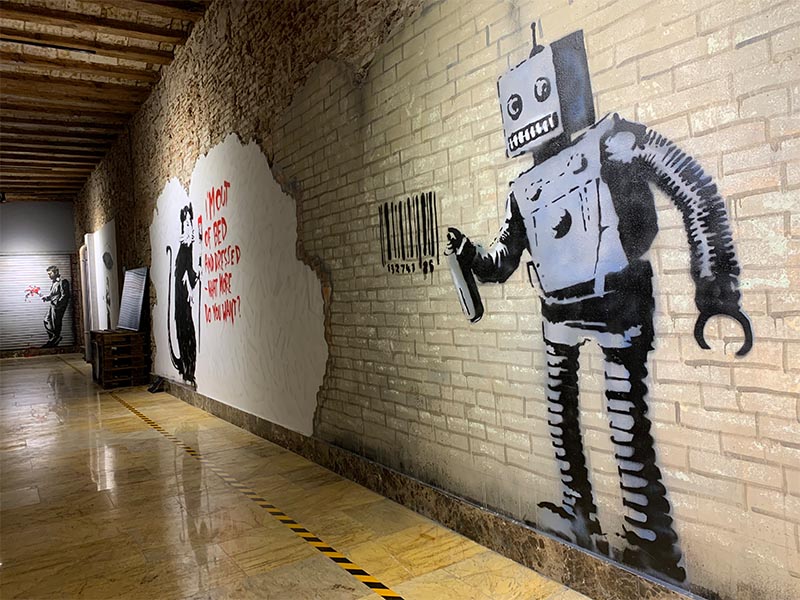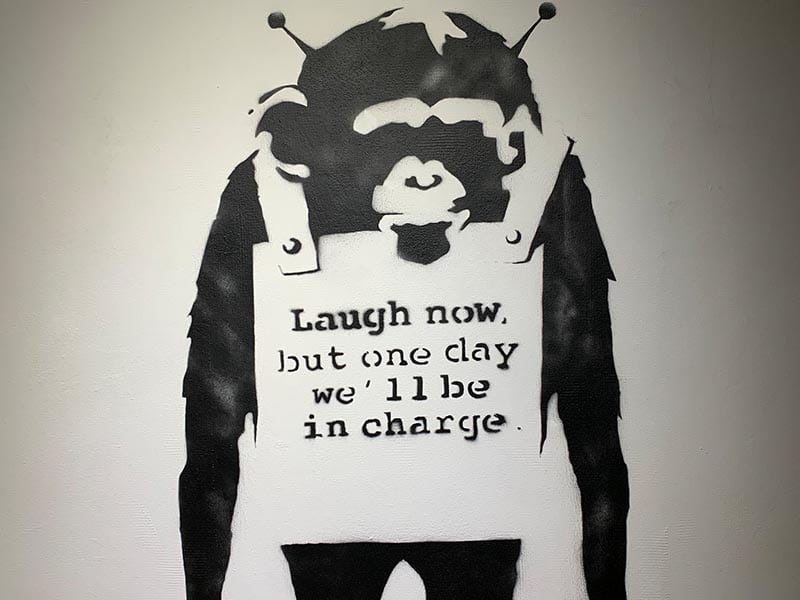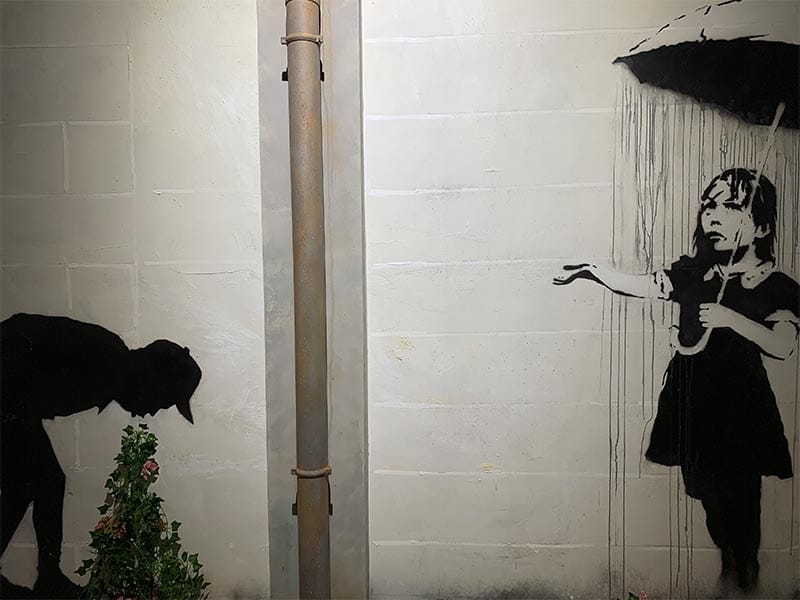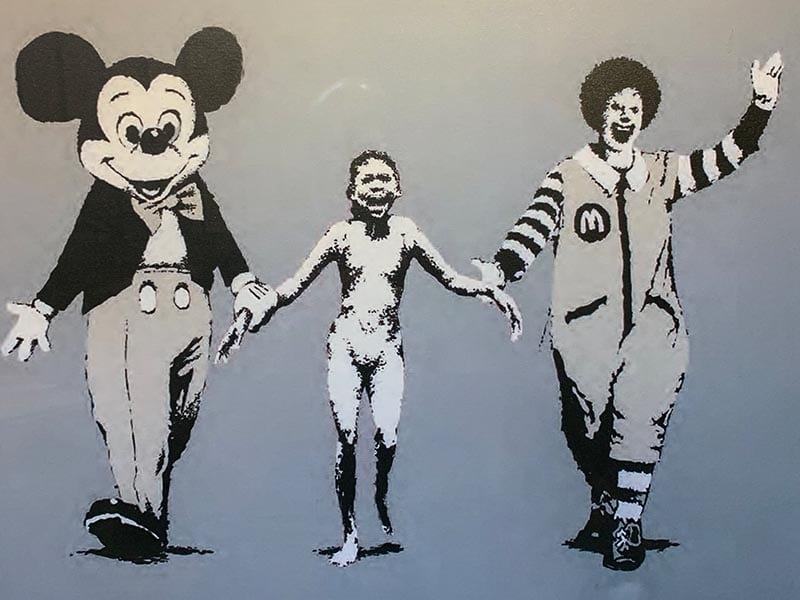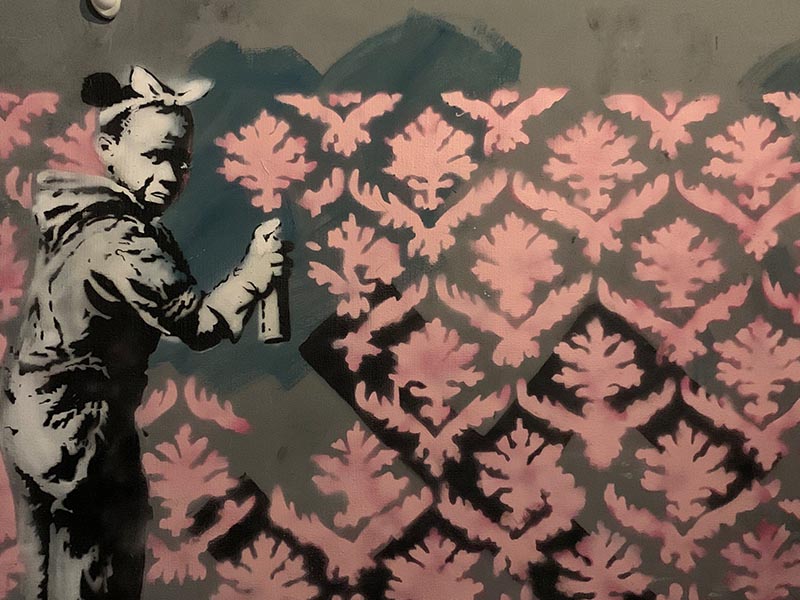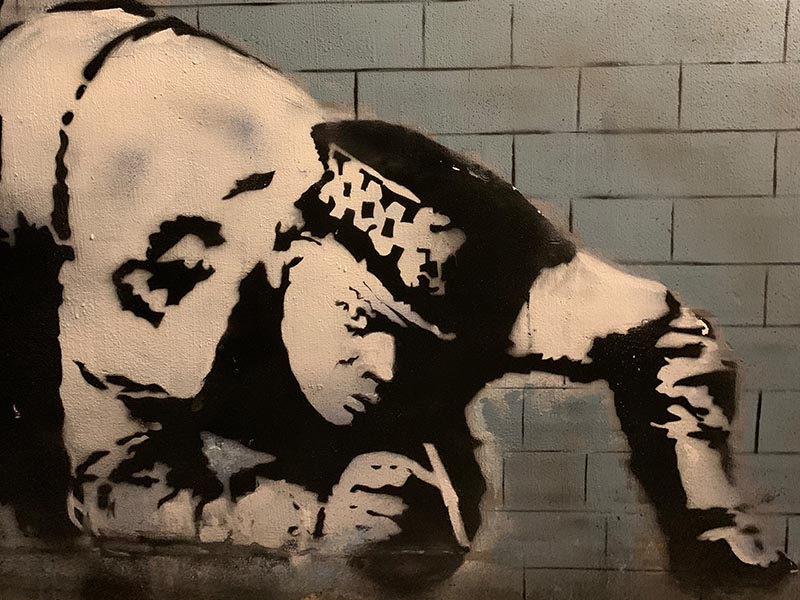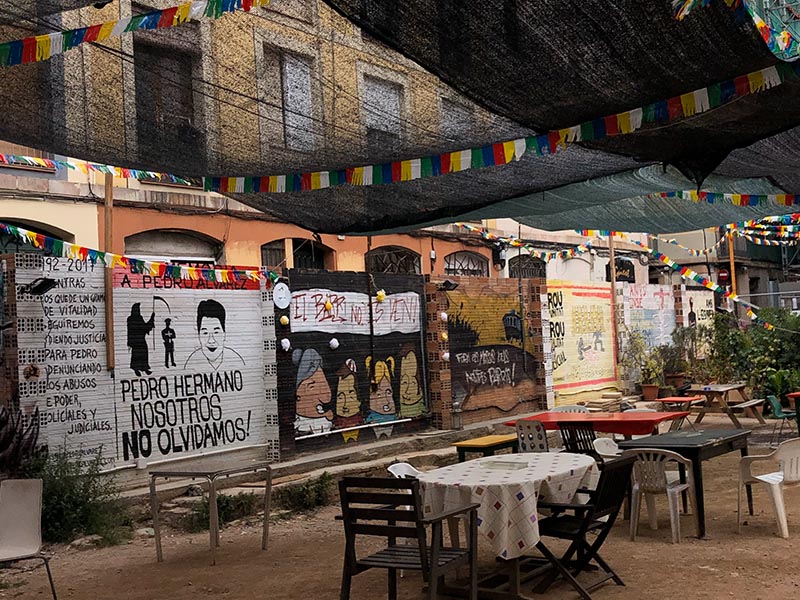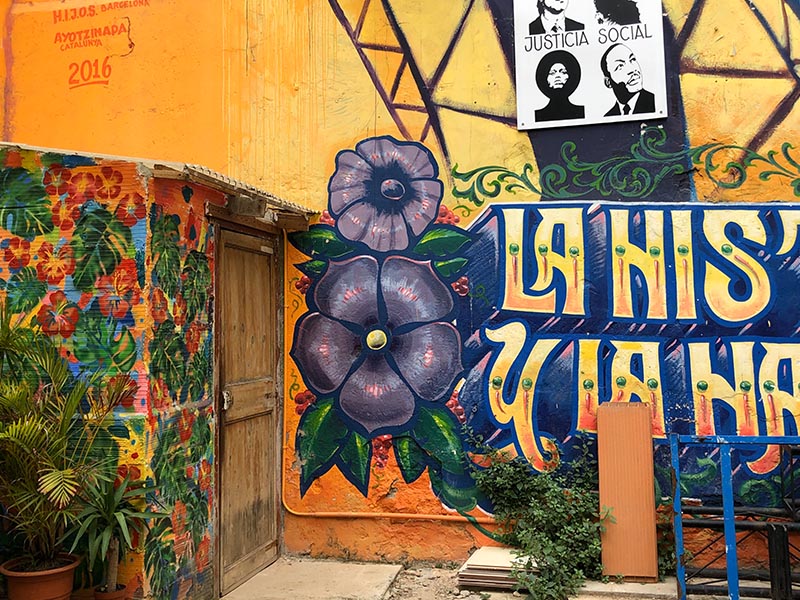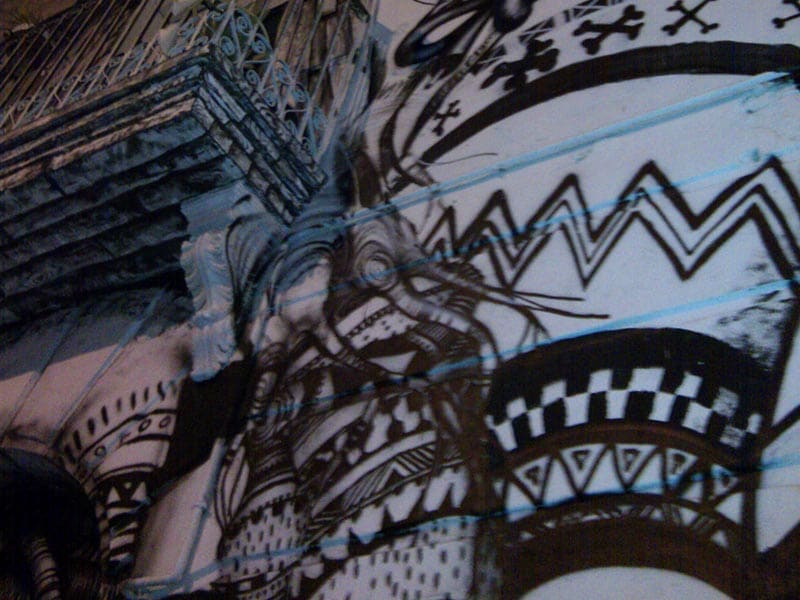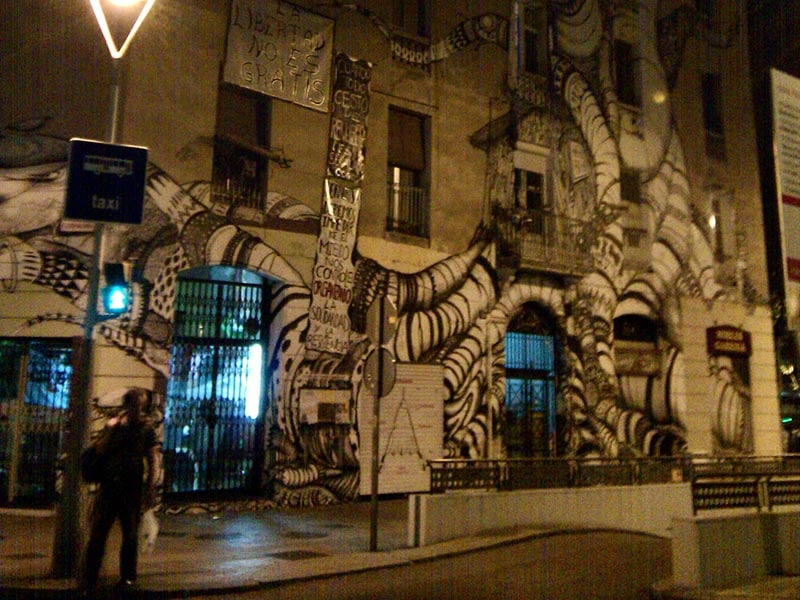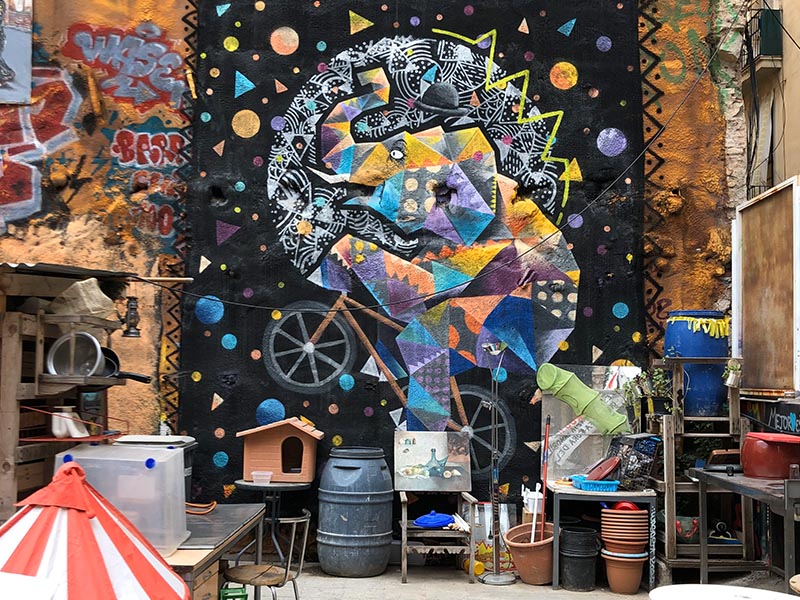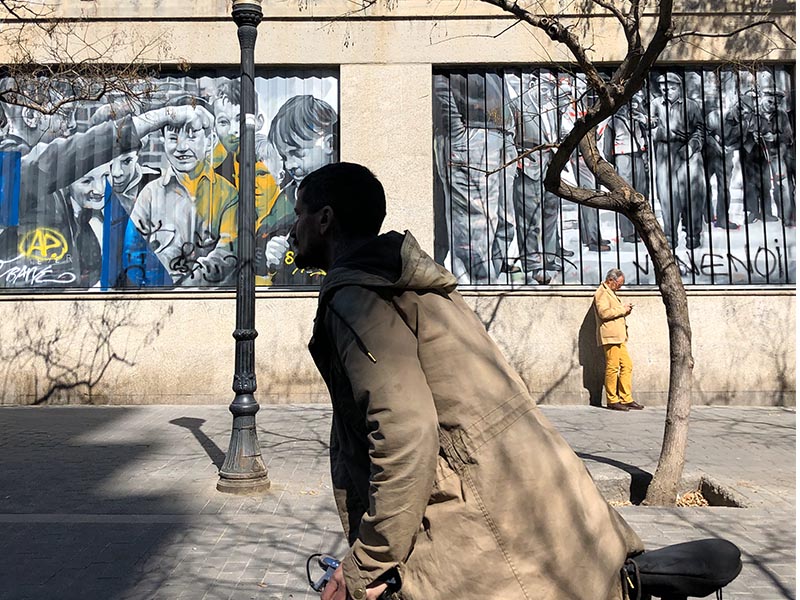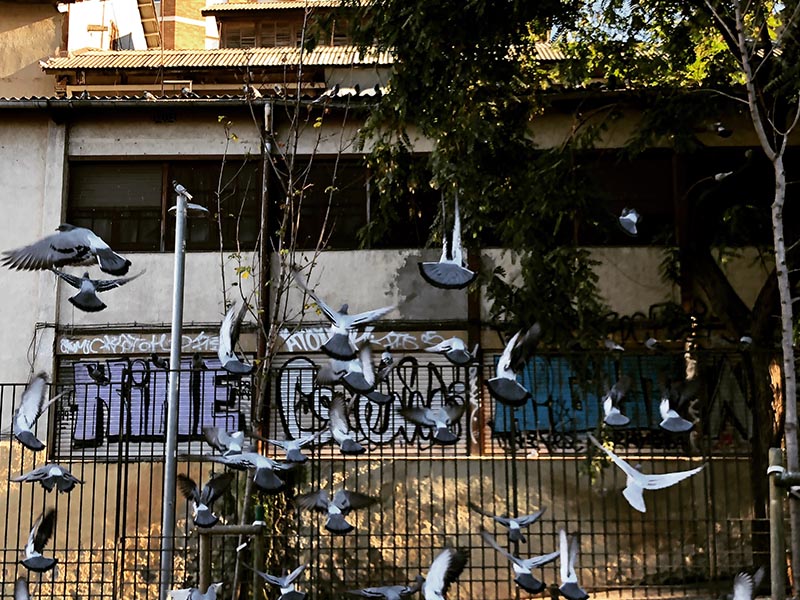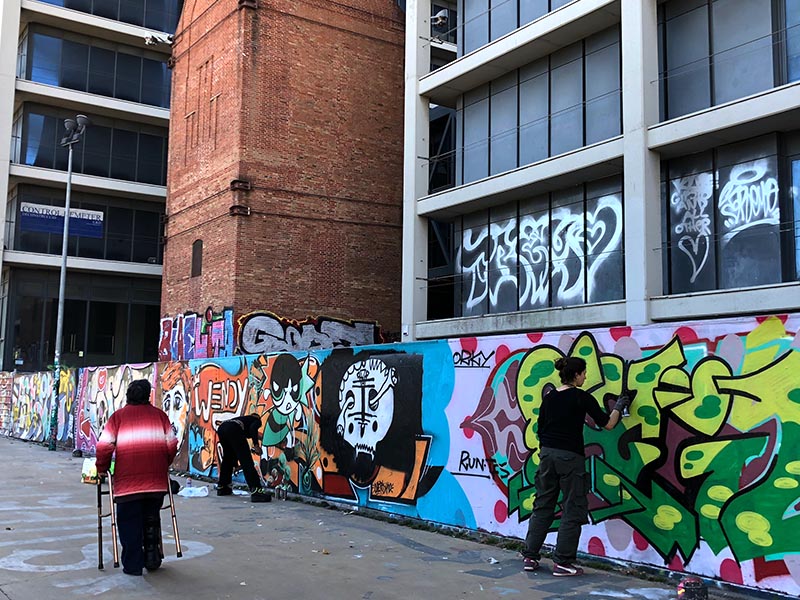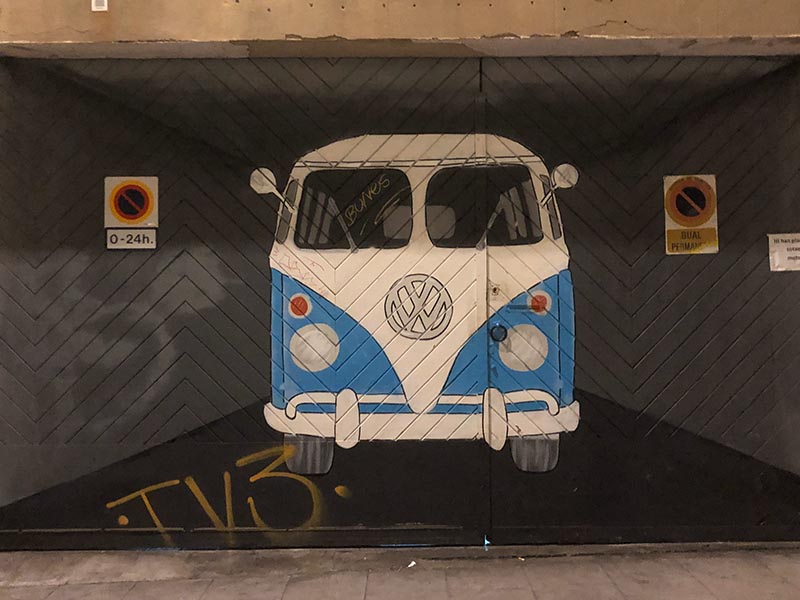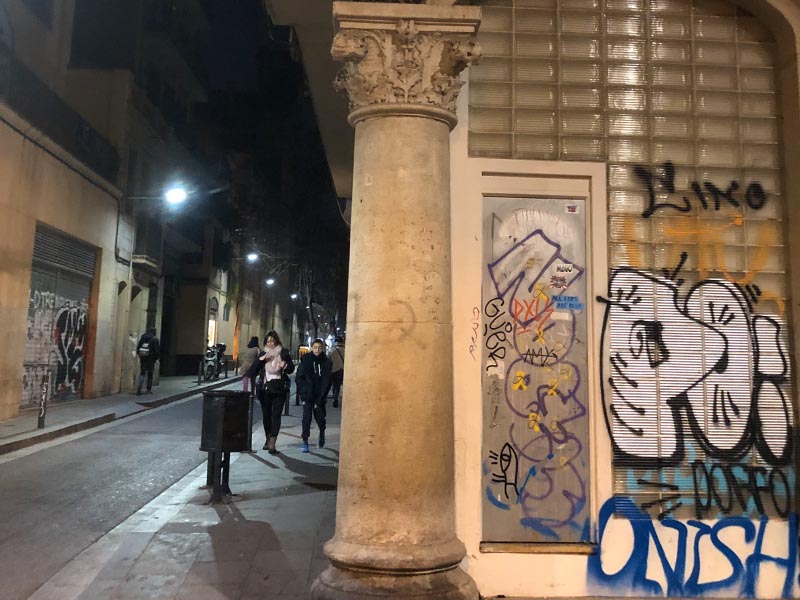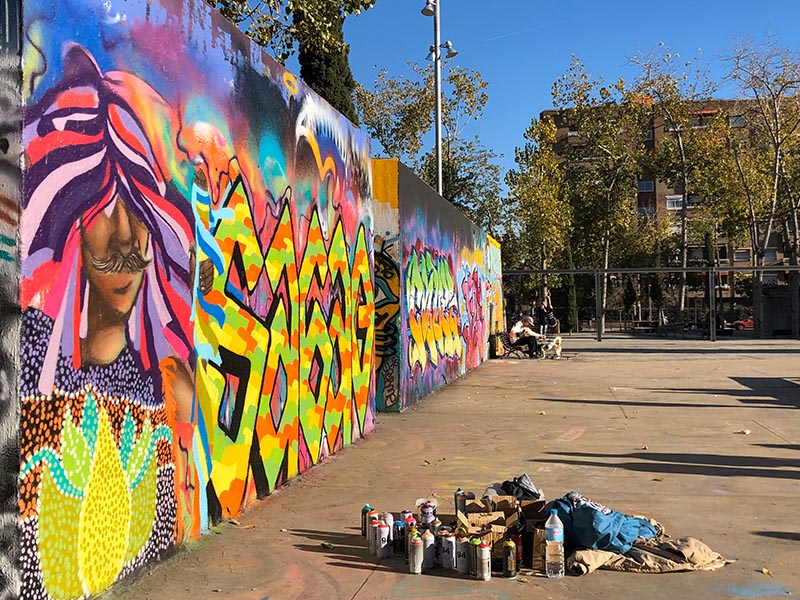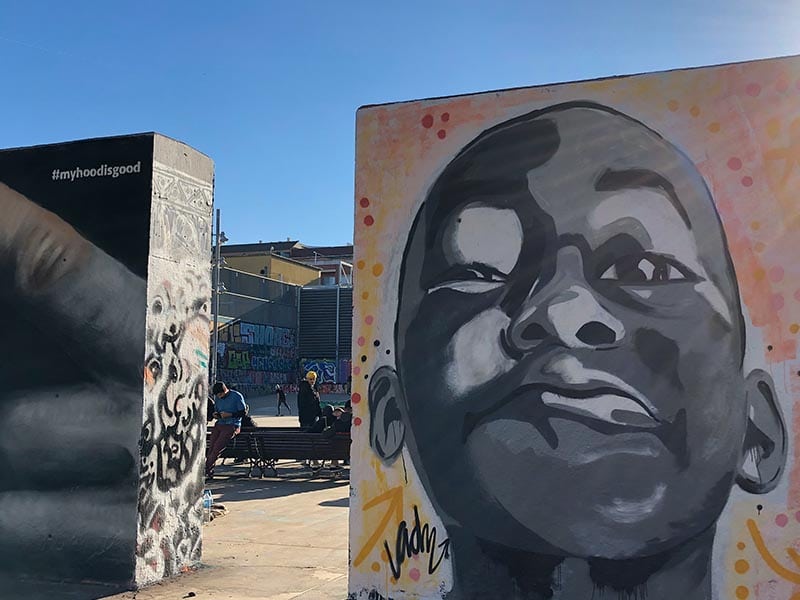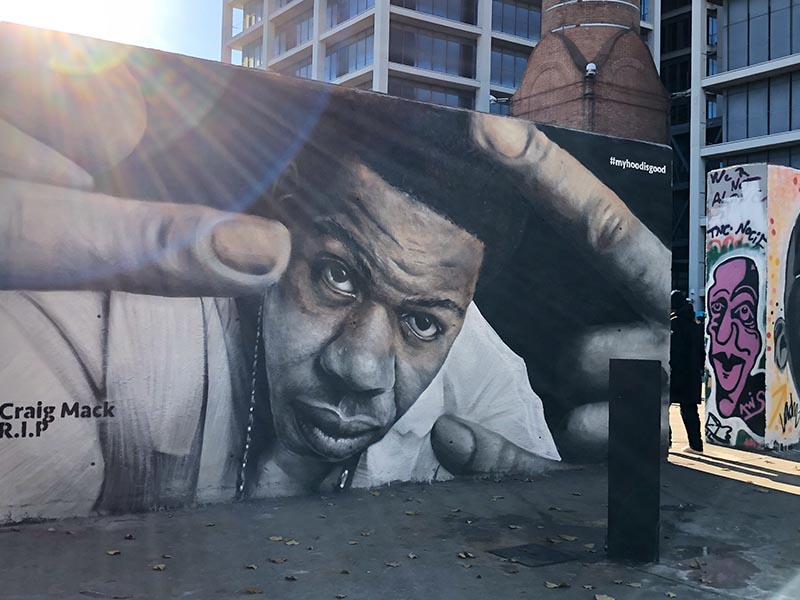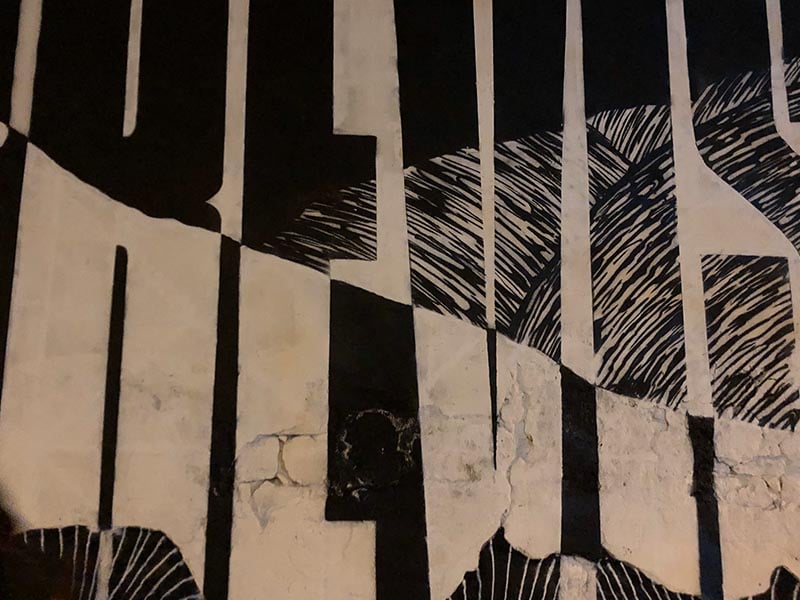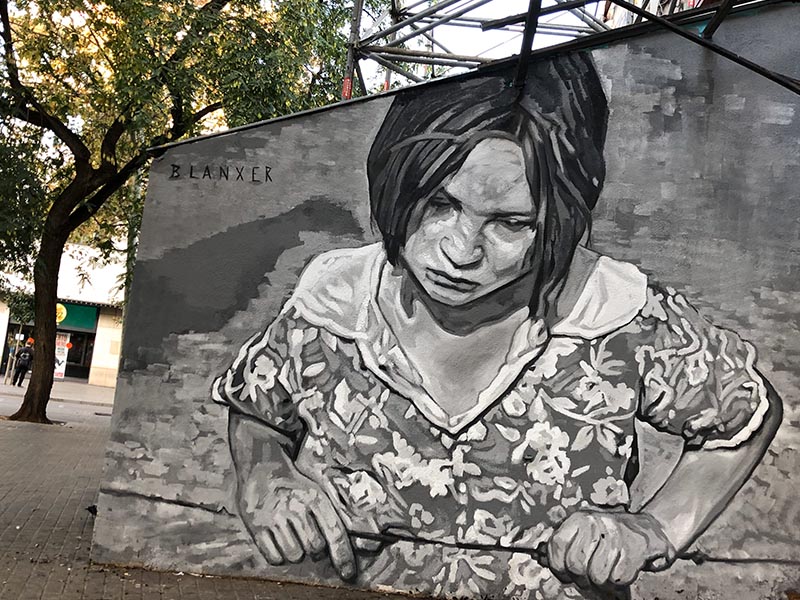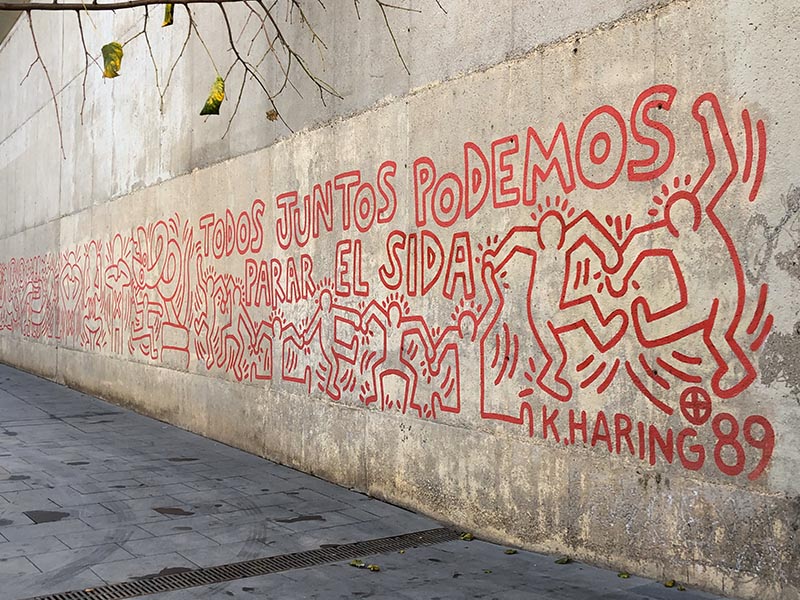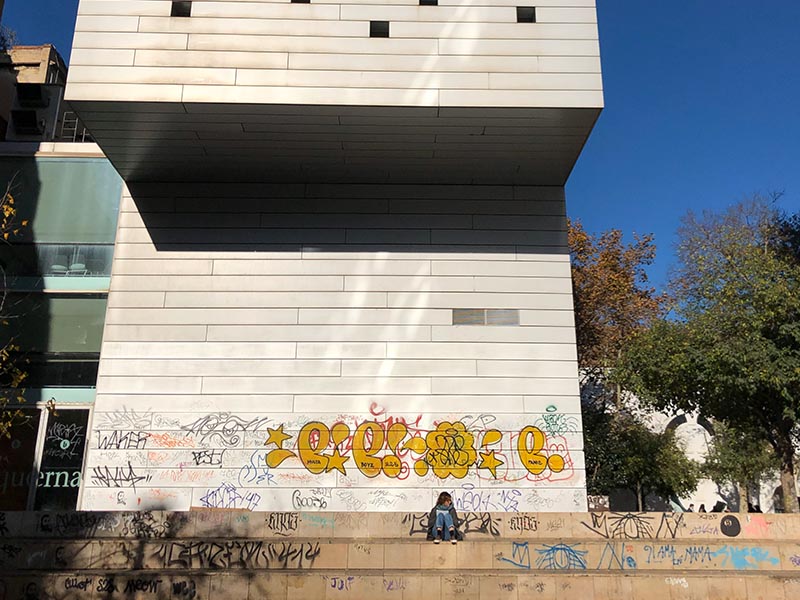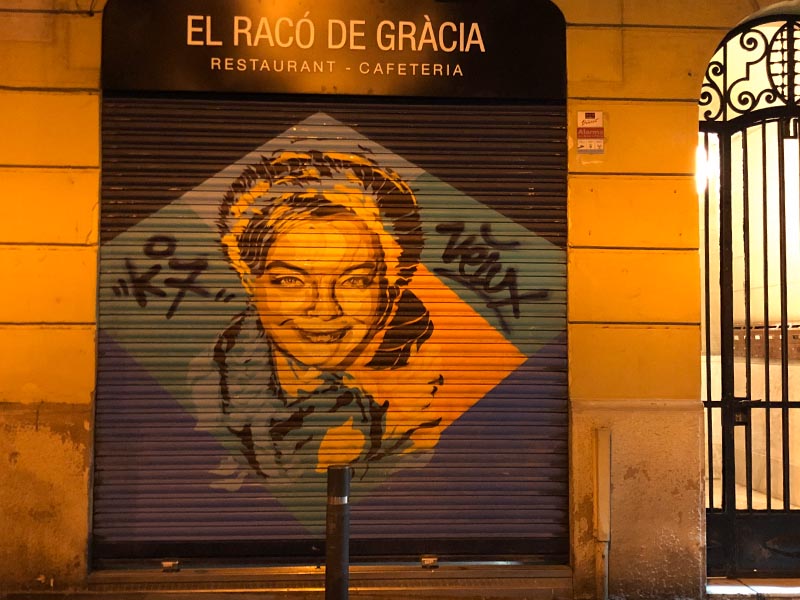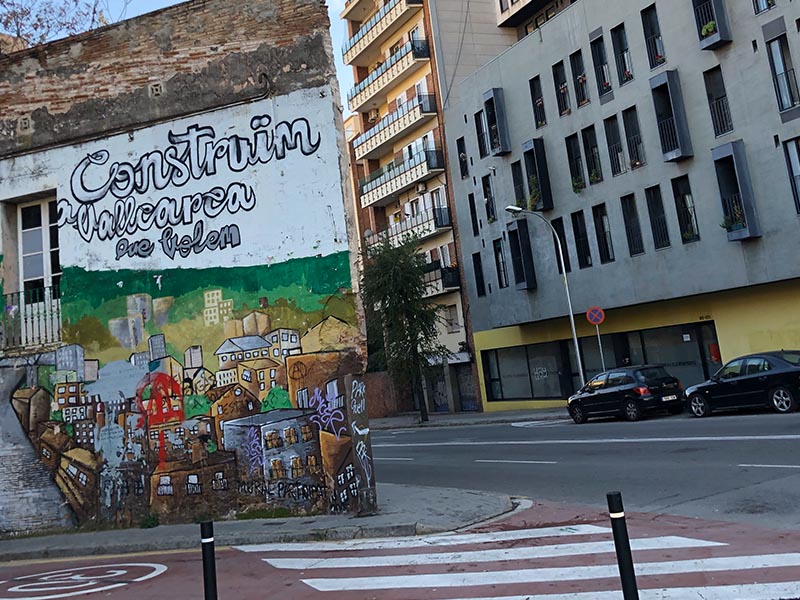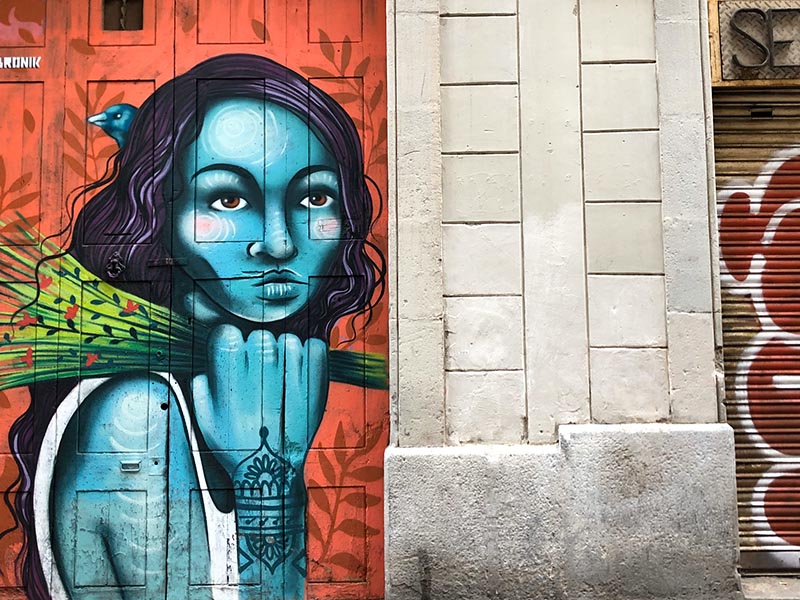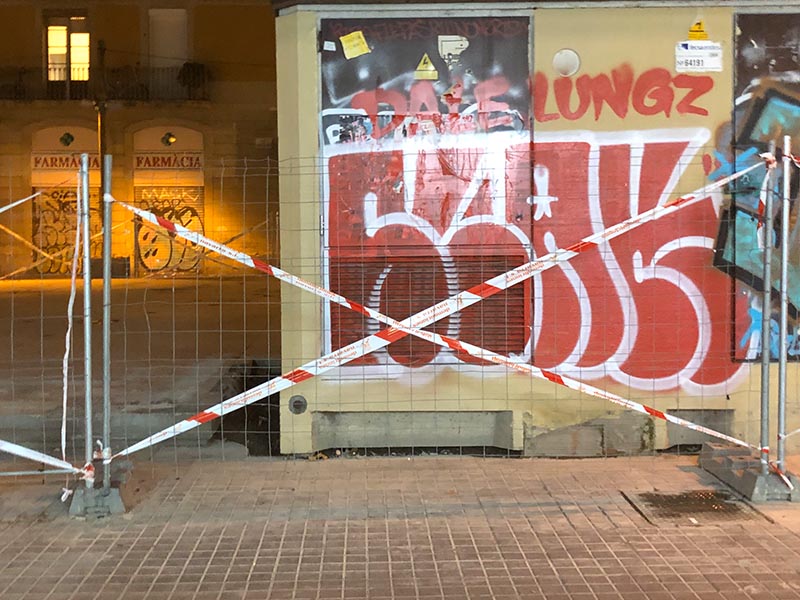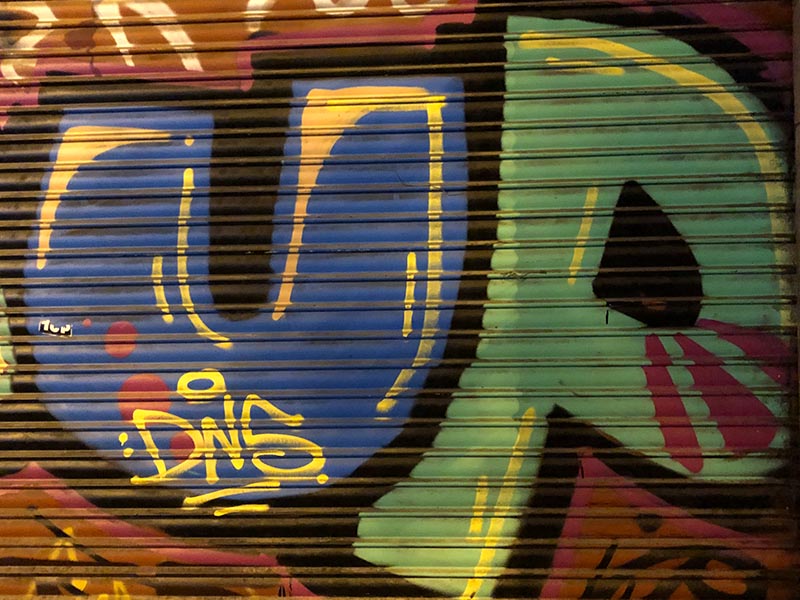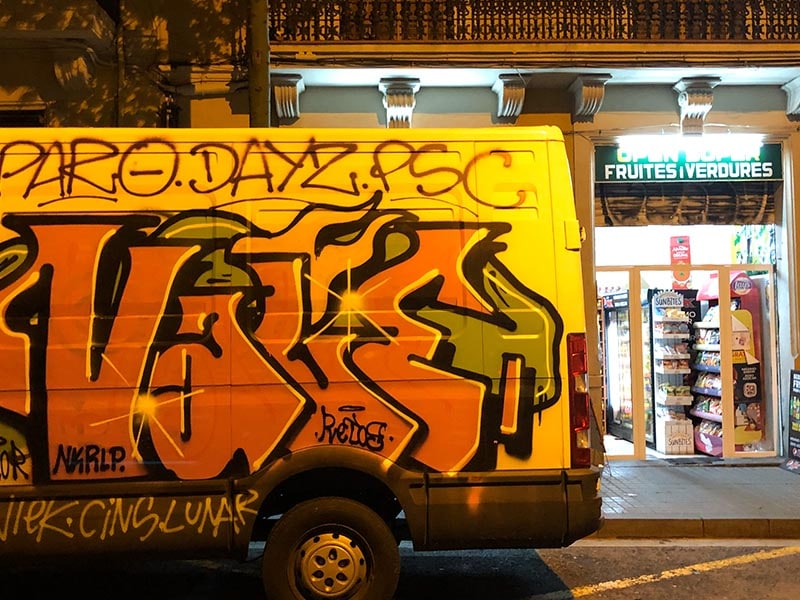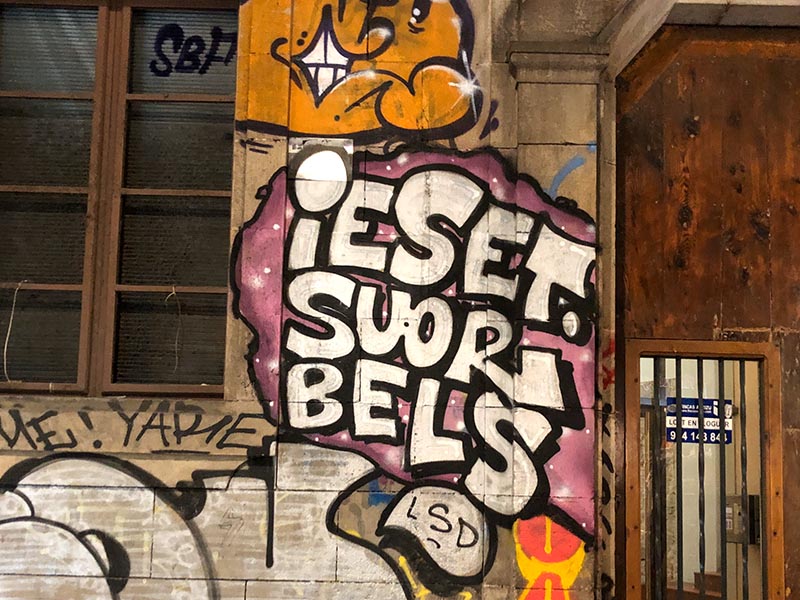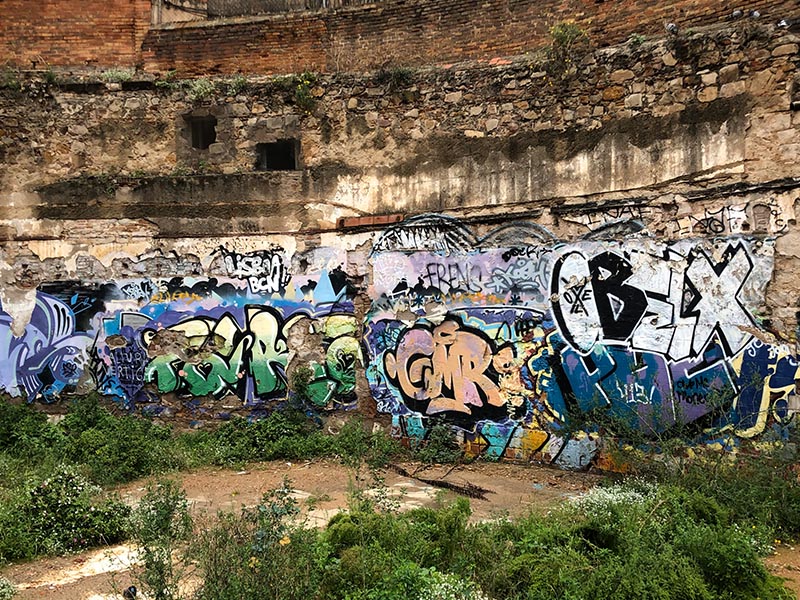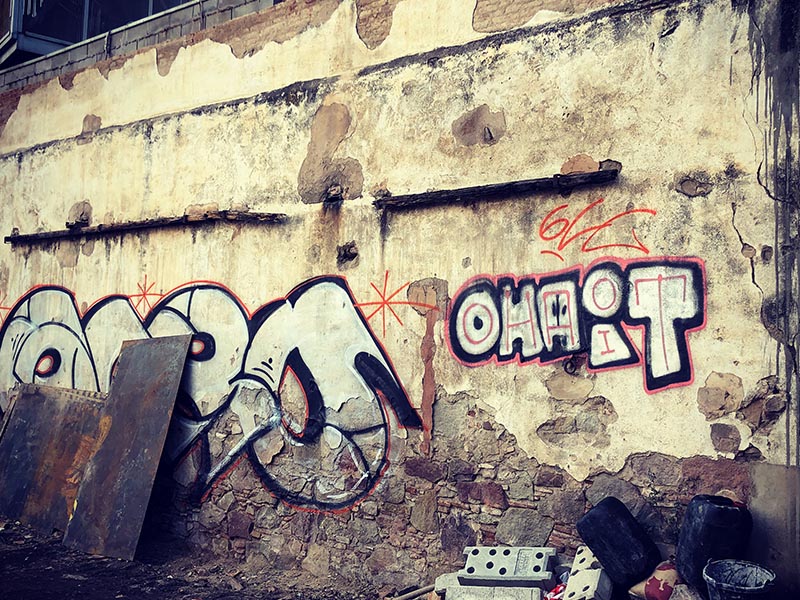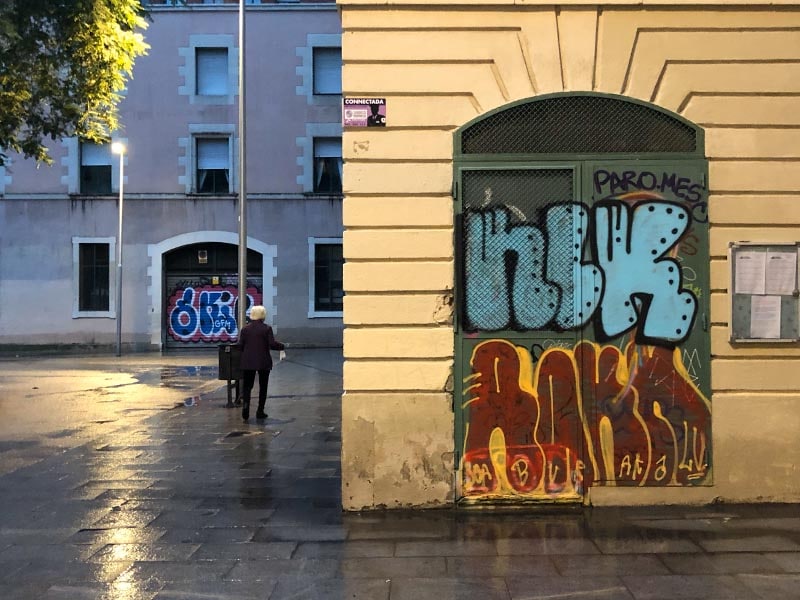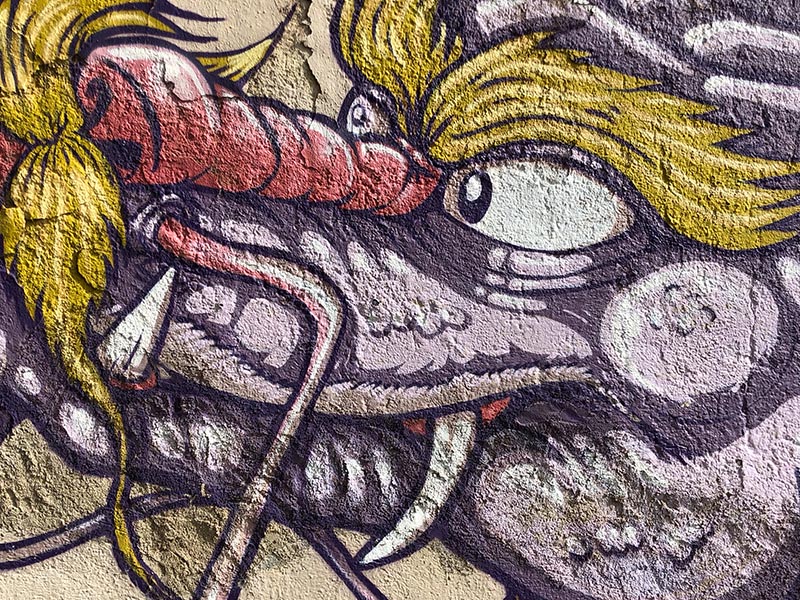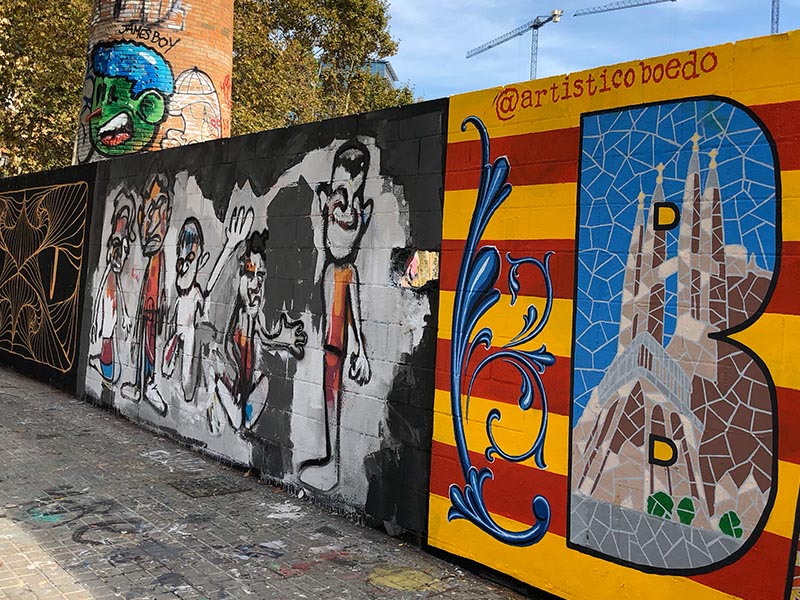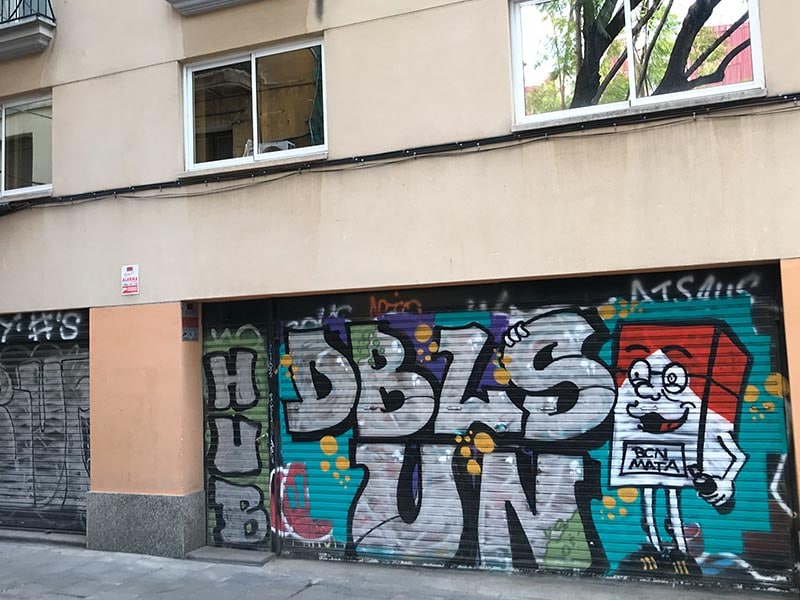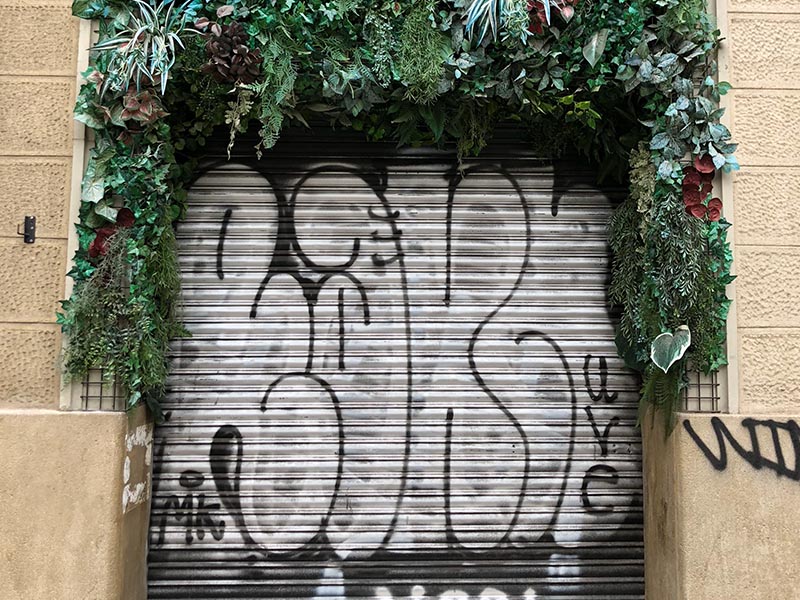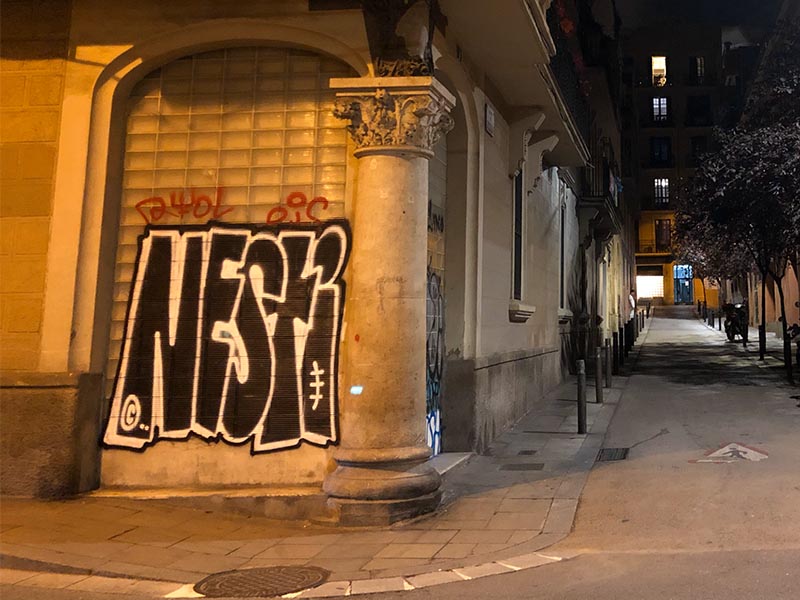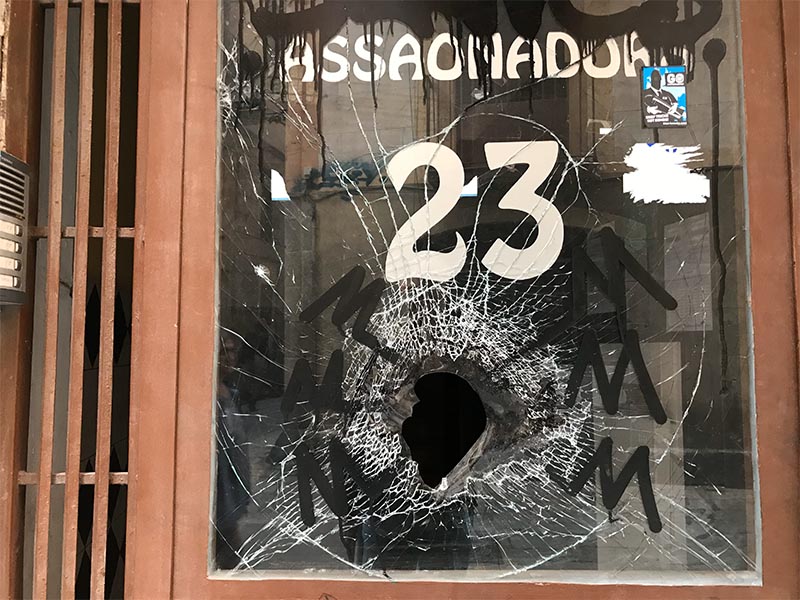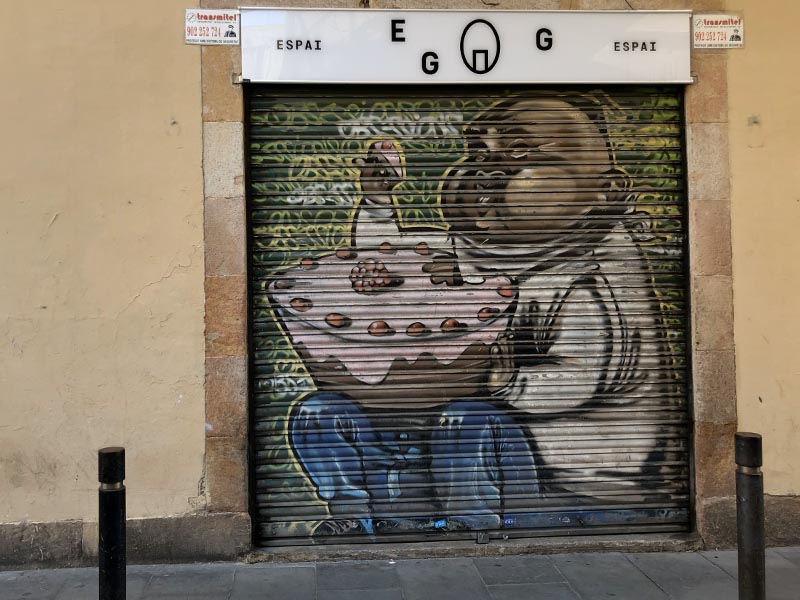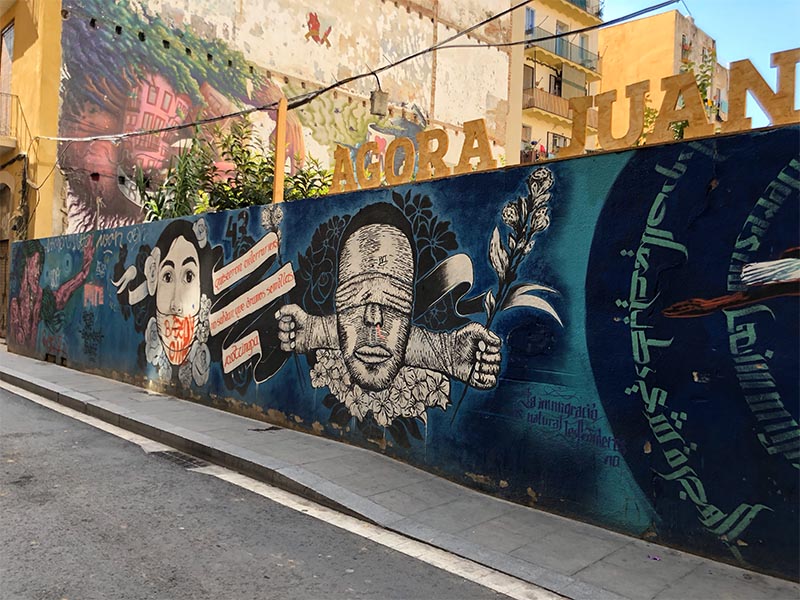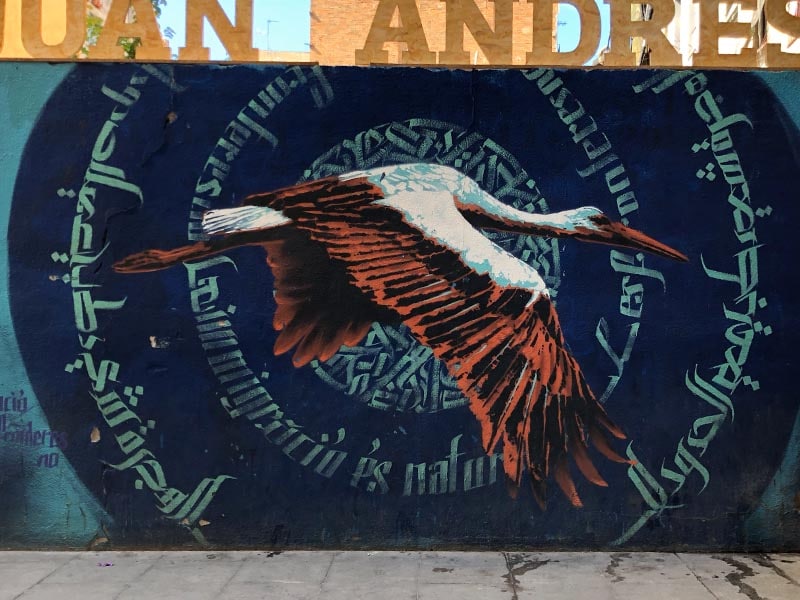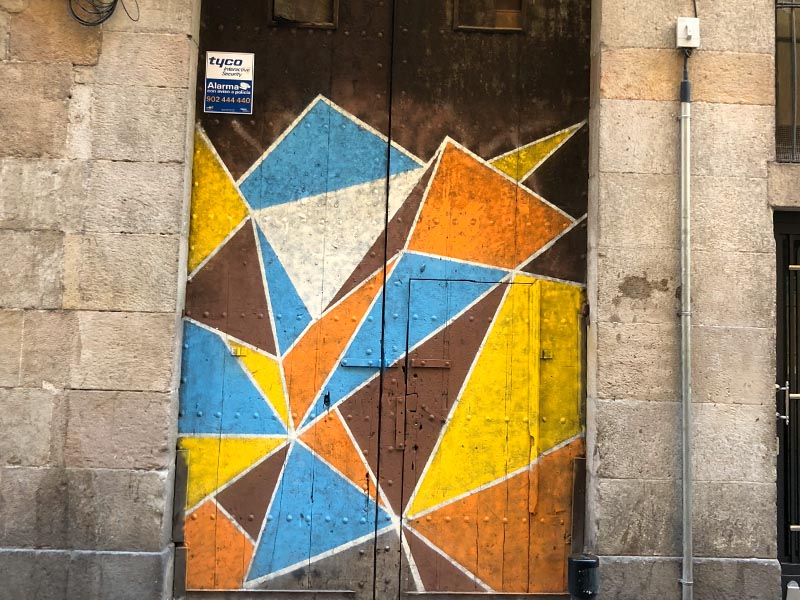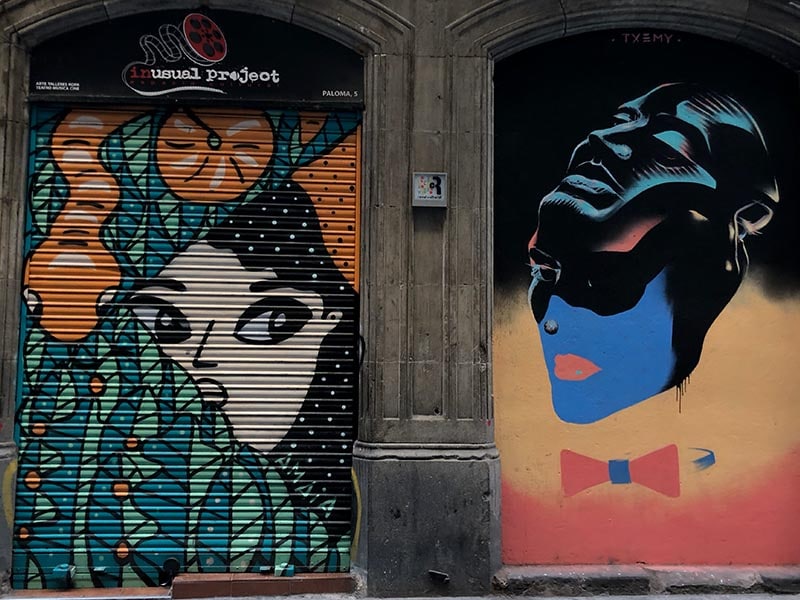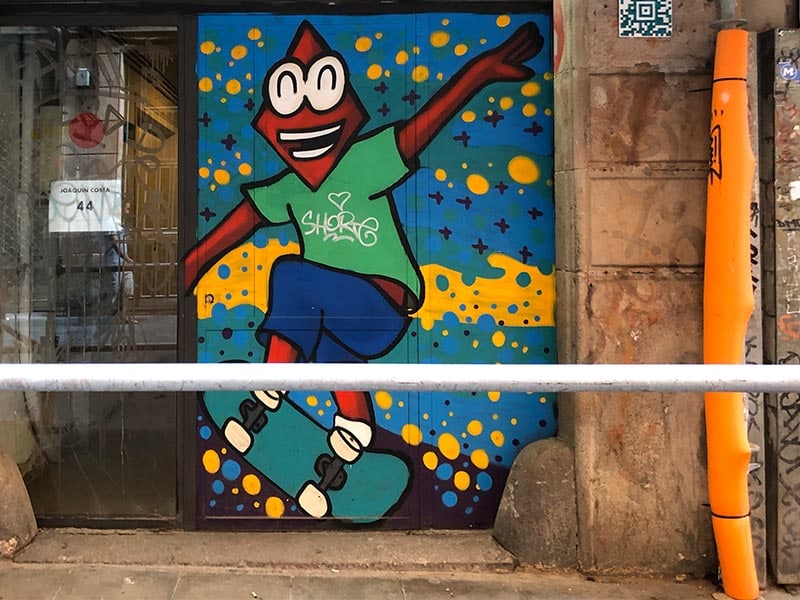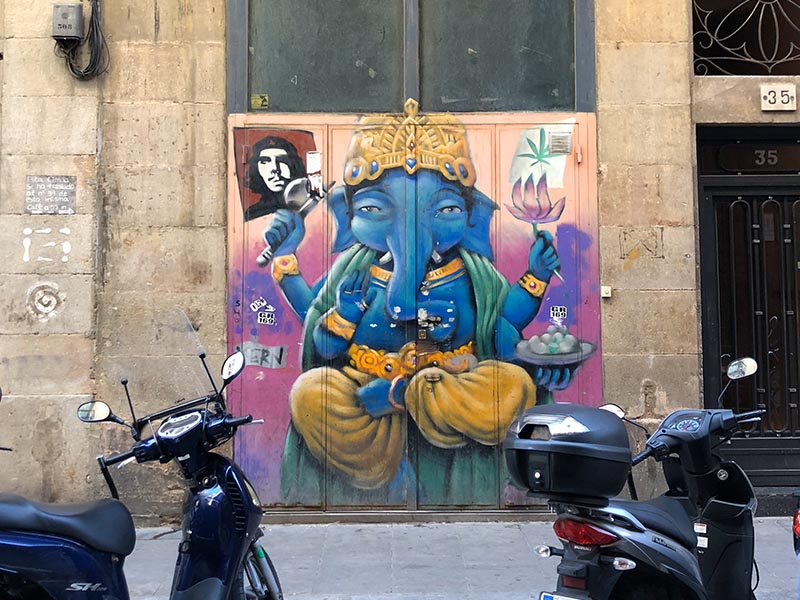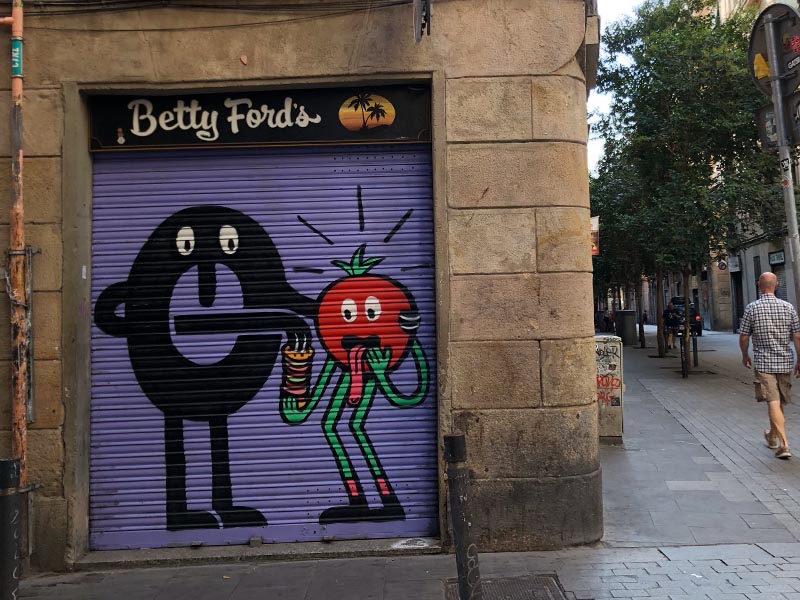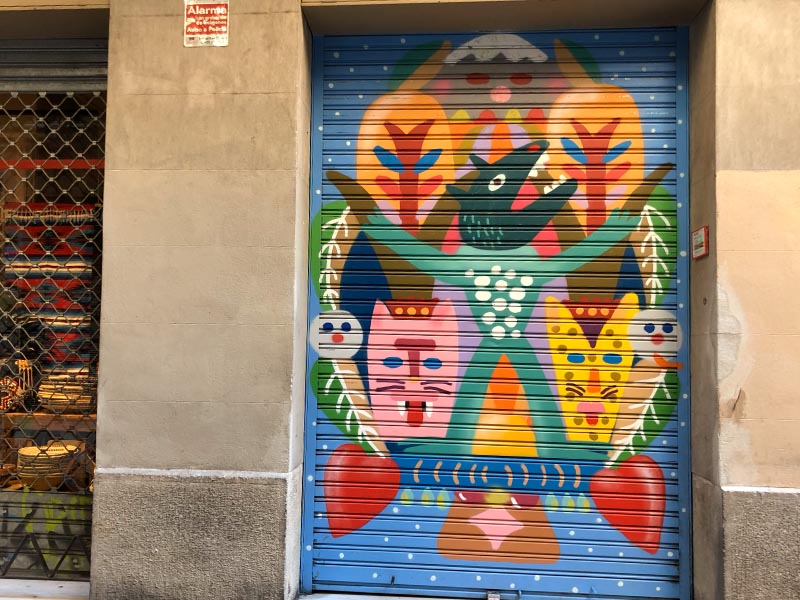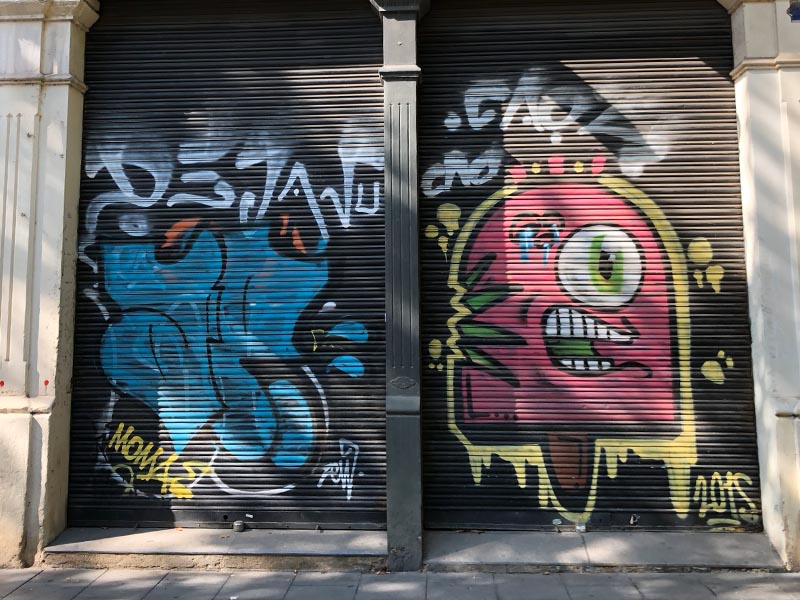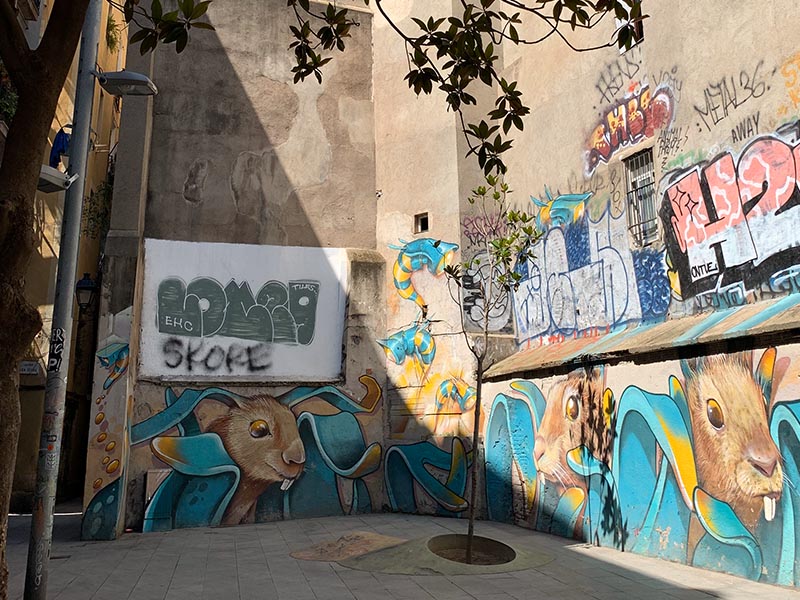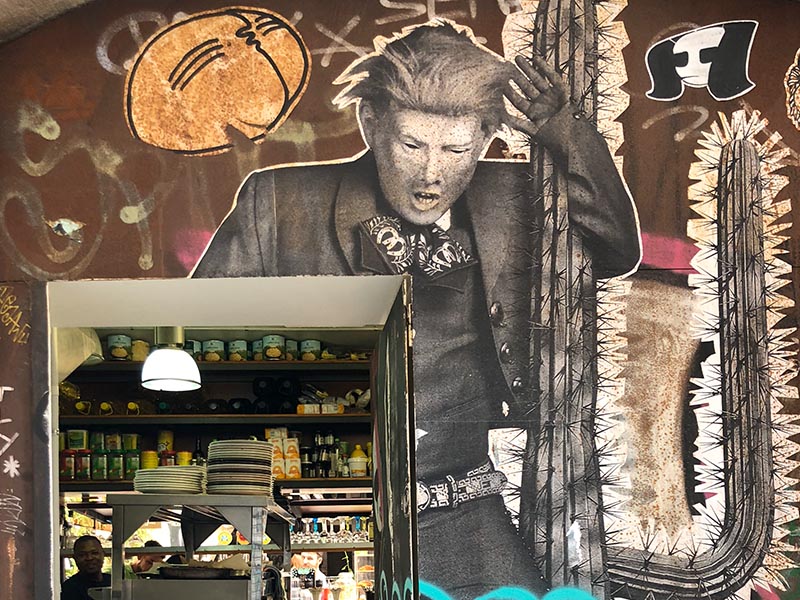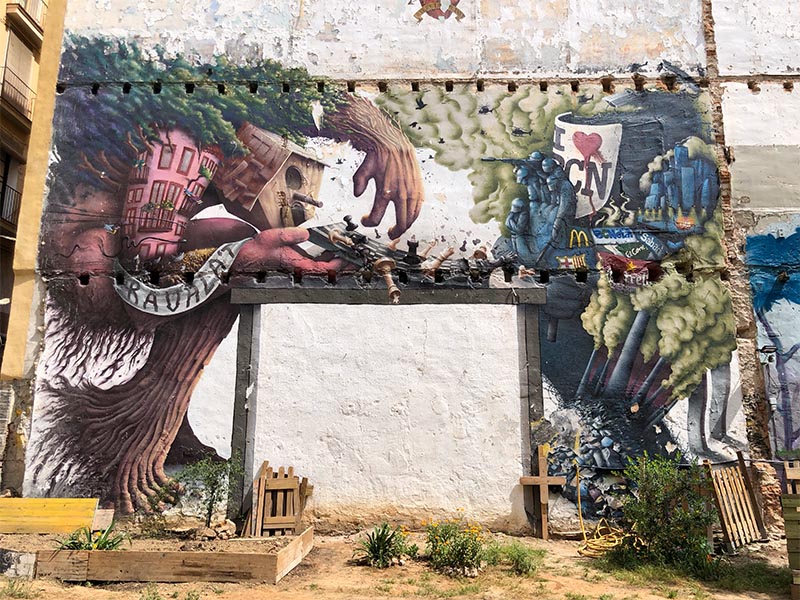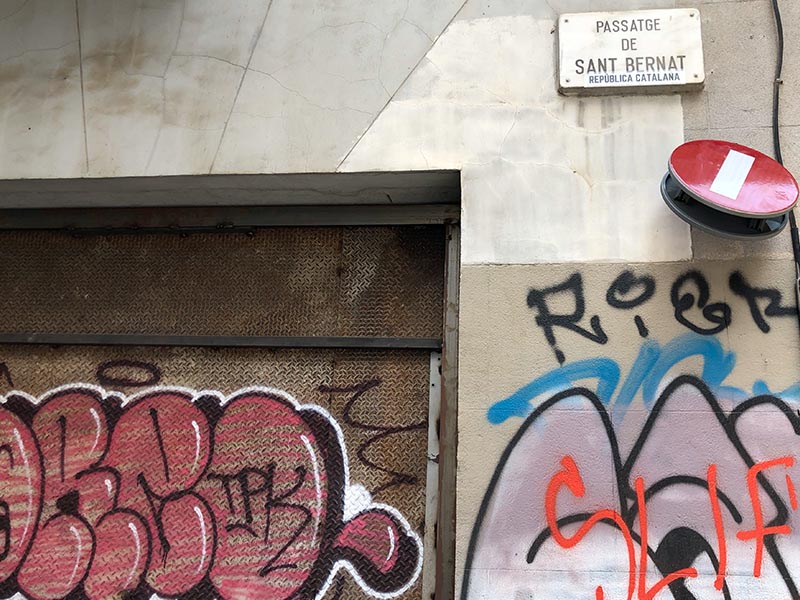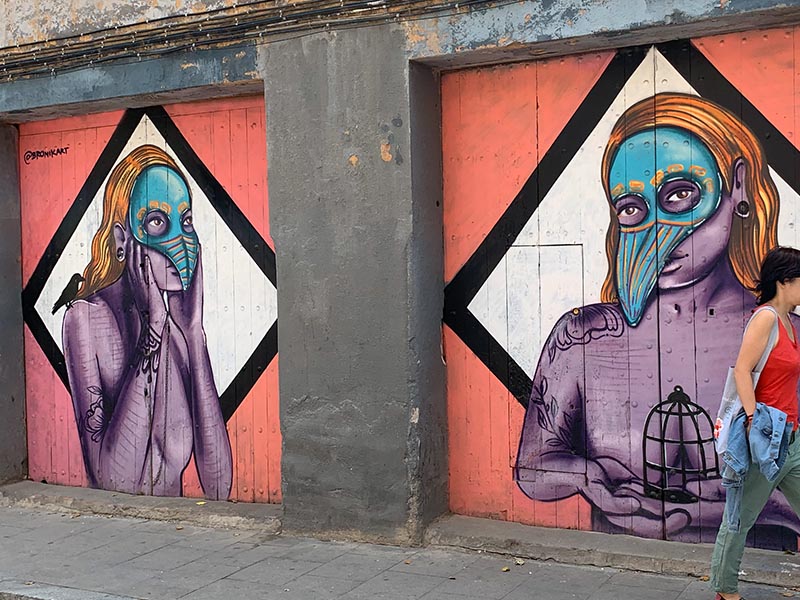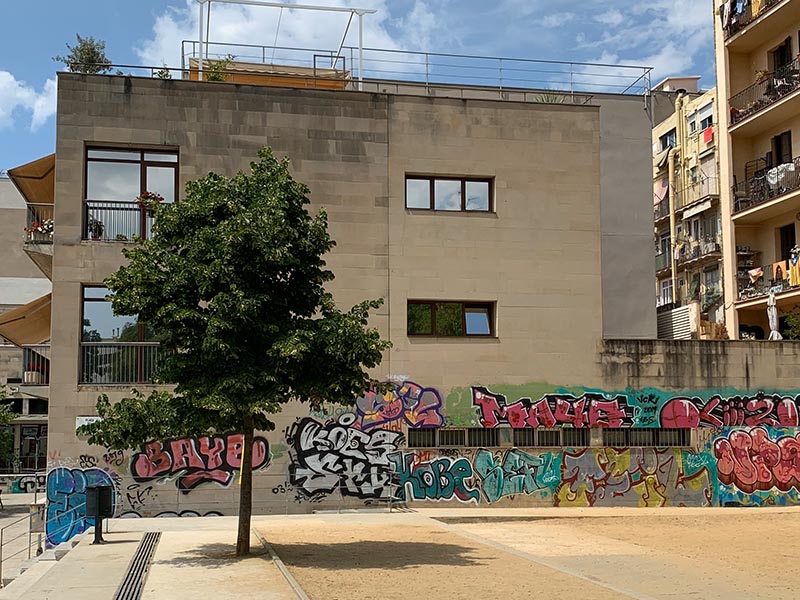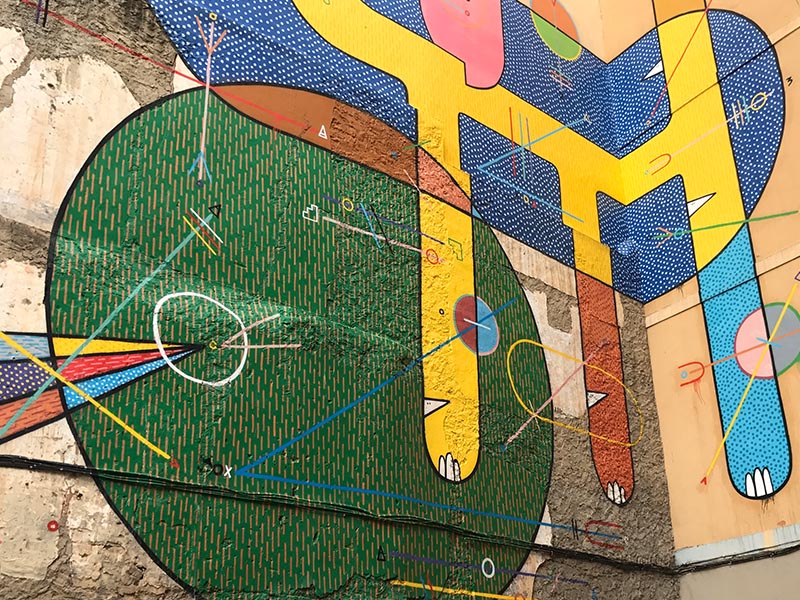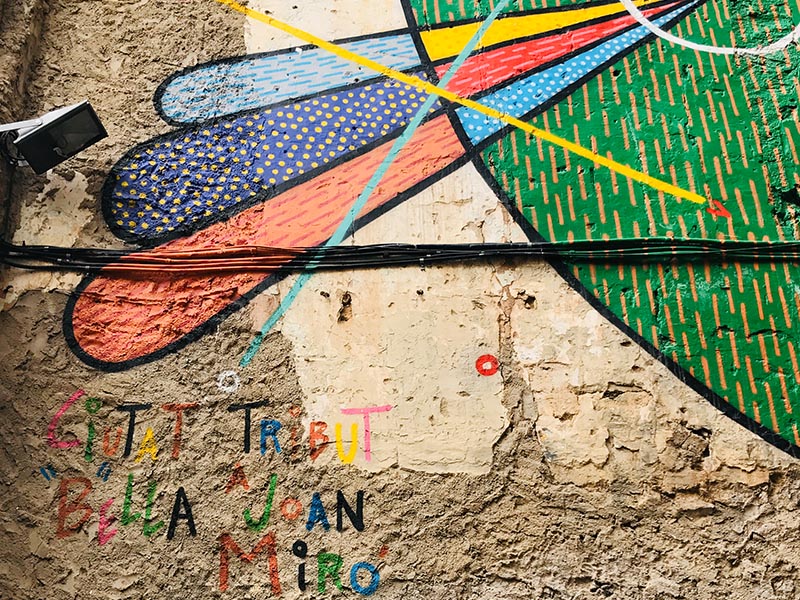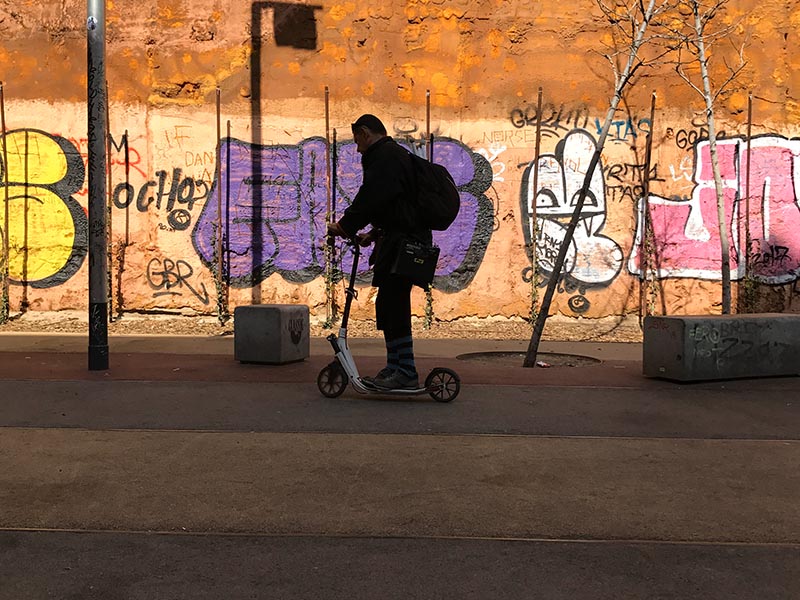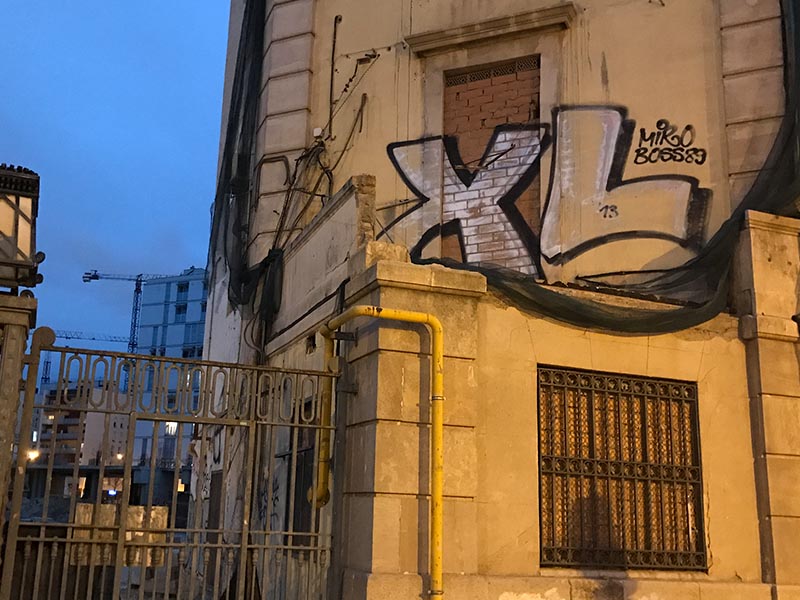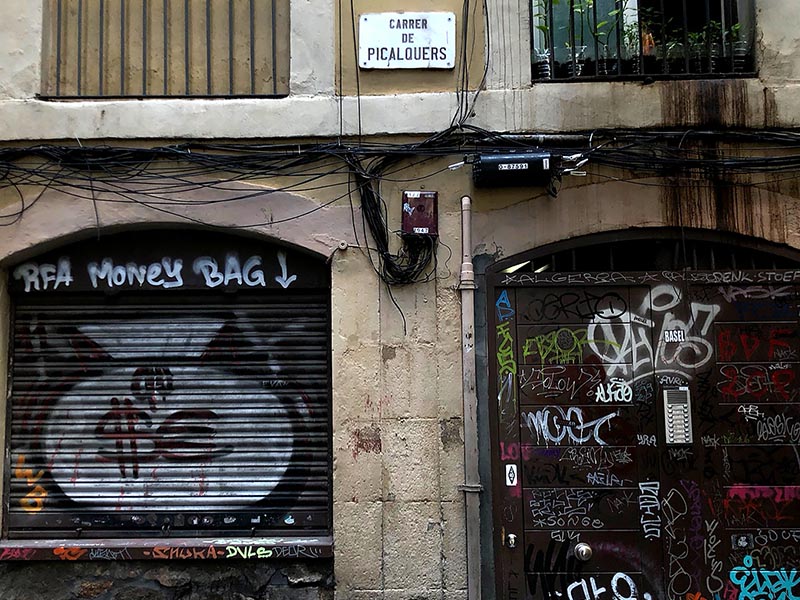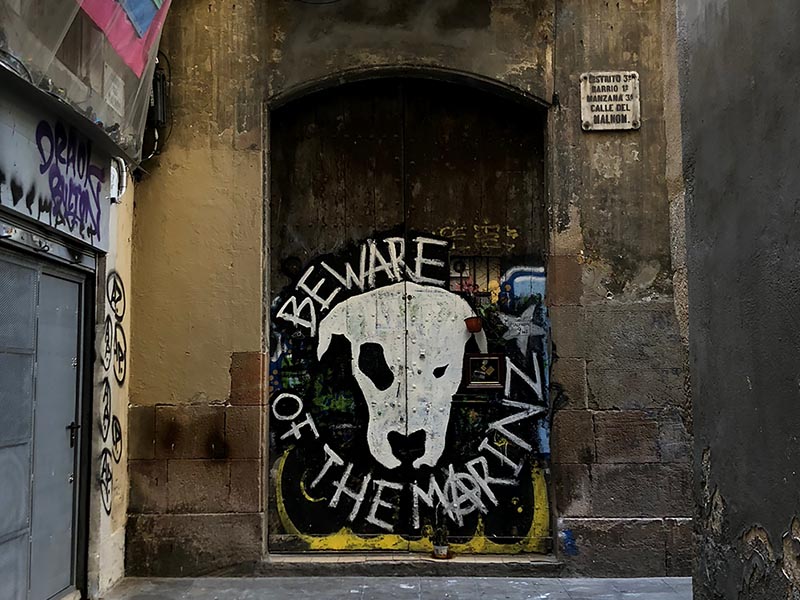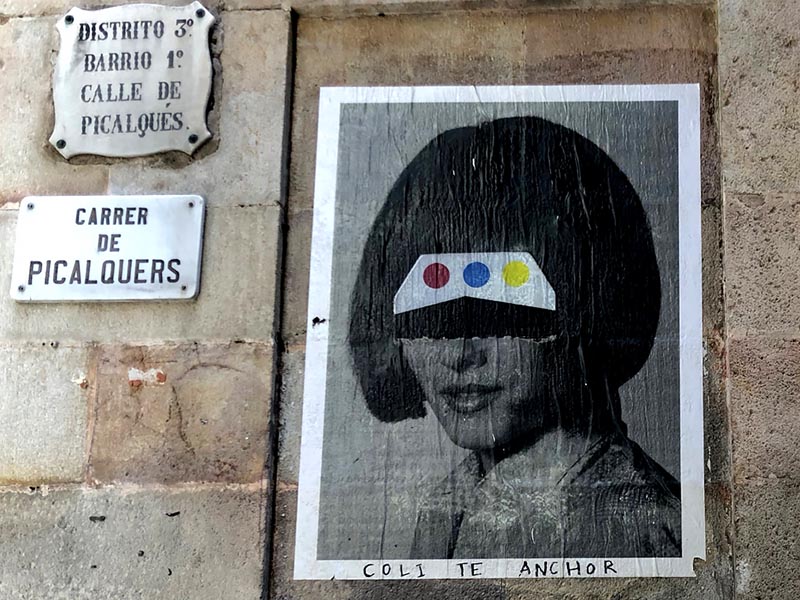Graffiti artist Mugraff discusses street art and graffiti in Barcelona.
My name is Bruno, aka Mugraff, and I’m 26 years old. Painting, living in color, being happy. That’s my passion. Graffiti is considered a transgression, an expression of civil disobedience. Graffiti means filling the city that nobody wants with the color you want. And street art, which is my focus, is a tool for personal enrichment, not social. Painting the city in the manner you wish feeds the ego. For the vandal, the metal, storefront blinds are very eye-catching. Just like trains; they’re something that is easy to see. The city is crawling with anti-theft blinds on storefronts. They are an idea surface to get dirty. Montana Colors, NBQ, Fleim, Molotov and so on, are brands and dealers aerosols and spray paints. They are used to for street art, graffiti, and artistic expression. Socially, graffiti is perceived as vandalism, as a rebellious act. This is because it isn’t understood. There is little information, and a lot of prejudice. Graffiti and street art are viewed as the same thing, but they have nothing to do with one another, even if they share the same spaces. The people charged with deciding whether a work is graffiti or street art are experts from within City Council, art school professors, and society itself. If you’re a store owner, and an artist paints the blind with something beautiful, you won’t seek a legal remedy. You receive this beautiful thing for free, and it changes your perspective on graffiti and street art. No more are people dirtying your blind to feed their ego. Someone has worked on your blind, and, since it’s illegal, has taken a real risk, because an expert at city hall or a civil servant might see it as graffiti, and not street art. And city hall, and civil servants tend to overgeneralize, cataloging and legislating everything. The risk, the illegality, that feeling of doing something forbidden… For graffiti and street artists, they’re great motivators. Many get into graffiti through vandalism. Painting trains, store blinds, whatever’s around. They end up evolving, realizing that they’ve got a tool for expression, technique and personal growth. Graffiti ceases to be seen as negative, as vandalism. These days, there are artists, like Banksy, who sell their work. He could be perceived as a vandal by some who don’t understand the message, that this is art. The duality of things, that’s what makes life interesting. It wouldn’t exist. If graffiti was legal, it wouldn’t exist. Likewise with street art. There wouldn’t be a societal urge to develop these tools into an expression of dissent against established norms. There was a moment, in my teens, when I felt it. I was 15 or 16. My city went from being a place where I’d walk around, losing myself in new things, to a place that was completely gray, ordinary, devoid of personality, of anything that would surprise you. This expanding gray made a lot of kids my age feel the same way. “So, they’ve erased everything? Let’s do graffiti.” If everything has been erased of those that came before us and they don’t wish to continue, it’s up to us to do it, to vandalize, to blow everything up, because they’ve influenced us, That’s how the artists of today, who are admired and recognized, got their start.
